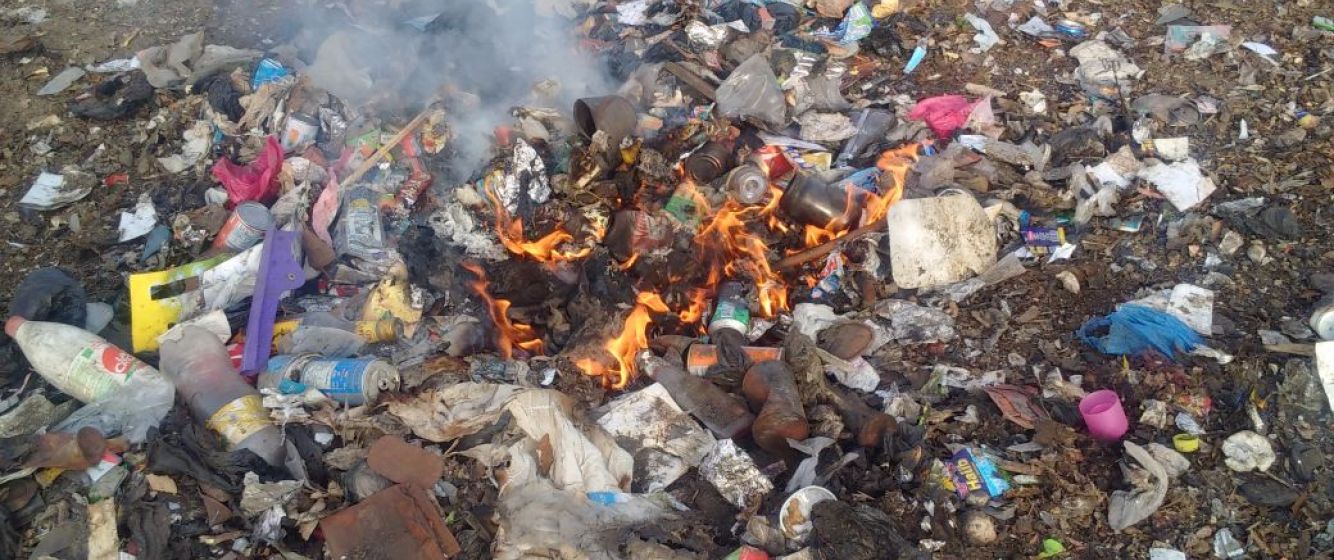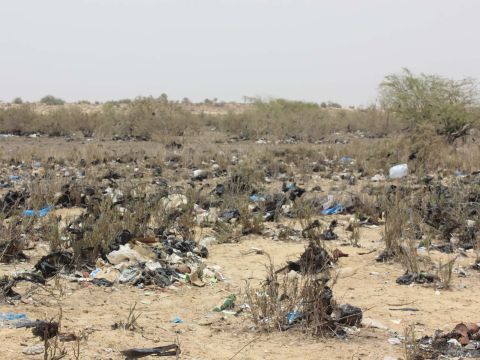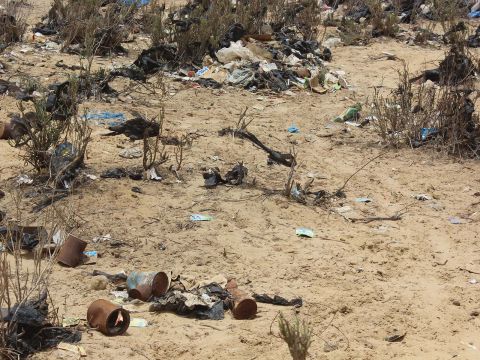On Wednesday 03 August 2016, the UGB VERTE Committee (created in 2012, UGB VERTE is an entity that is active in the environment and is supposed to bring together all the components of the university that are the PATS (technical administrative and service staff ), student teachers, etc.) was on an information visit to the village of Todé less than 3 km from Gaston Berger University. This was a follow-up to the mood swings they had over the huge garbage dump at the entrance to the village.
This is waste from campuses of the UGB and sent by the cleaning services of the CROUS (Center des Œuvres Universitaires de Saint-Louis). This first descent of the UGB GREEN Committee reports the alarming situation prevailing in this village.
The dump has become a veritable ecological and social bomb because the natural transport elements of wind and water carry harmful substances into the interior of the village with all its consequences for the health of the inhabitants as well as on the environment of the village. Plastic bags remain entwined in tree branches and bushes. Let's not talk about livestock squatting piles of filth in search of food with all that entails as risk of contamination by ingestion of harmful substances such as plastic bags that can kill it slowly.
But most alarming in all of this is the reuse of food waste by children, including schoolchildren attending a school less than a kilometer away. This food waste is washed and then reconsidered by this fringe of the carefree population of the danger that lies in wait for it. The other fact is that some people come to recover some type of reusable waste for marketing purposes and this, without any protection as there may be gas emanation and especially the smoke that emerges from incineration some of the waste.
During this rainy season, rainwater flooded the area and the dump has almost become an island. The most immediate consequence is the risk of contamination of the irrigation water especially that the site is close to the agricultural exploitation areas and that it is planned the development of another irrigation canal not far from the.
This situation did not leave insensitive some inhabitants like ABK, concerned with their well-being and their dignity and who tried to approach the authorities of the University in this case those of the CROUS. It was initially students from the village who had sent a series of correspondence to the CROUS to overcome this. They had taken up the case and had been supported by some CROUS workers who were sensitive to this cause. Some residents had lambasted the slowness or indifference of the authorities, which had led them to want to publicize the case and tried a move mood.
To try to secure the place, they were built a rudimentary fence supported by stakes. But soon after, the pickets collapsed one by one and the grating yielded, thus welcoming its batch of daily visitors that are the collectors, children, herds of cows and goats and stray dogs.
Today the positive aspect that had to be reported by our interlocutor ABK lies in the employment of 3 or 4 people responsible for incinerating a few piles of filth. This only amplifies the problem with all the gases that emanate when it is known that the combustion of certain chemicals can cause toxic fumes. The first presentations are the incineration workers who have only rudimentary tools to protect themselves (dust mask).
In our outreach, we were able to access a document entitled "Memorandum of Understanding between the CROUS and the Village Chief of Todé", dated June 18, 2015.
At first sight, it was an agreement that seemed to want to limit the damage since it focused on securing the site with erection of a fence wall of a height of one meter surmounted by a fence and recruiting a site guardian. This decision followed a meeting that took place on June 9 at the premises of the CROUS between a delegation headed by the village chief and the CROUS authorities.
Since then, nothing has been done and even this last option should only be provisional (the MoU mentions a seven-year duration of site occupation) since the most beneficial decision would be that of the relocation of the site to the Gandon technical landfill. The first argument that was reported to us was that the CROUS had stated that it did not have enough vehicles to evacuate its garbage to the said center.
Today the dump is growing because it hosts the waste of a student population estimated at 14,000 souls. Pollution is increasing and the danger to the village and its surroundings seems to be progressing to the point of threatening the already fragile balance of this agrosilvopastoral environment. No serious progress has been made in the face of this lethargic situation. The 400 or so souls that populate this peaceful village are not an entirely separate population, but are rather fellow citizens who deserve more consideration and preservation of their dignity.



